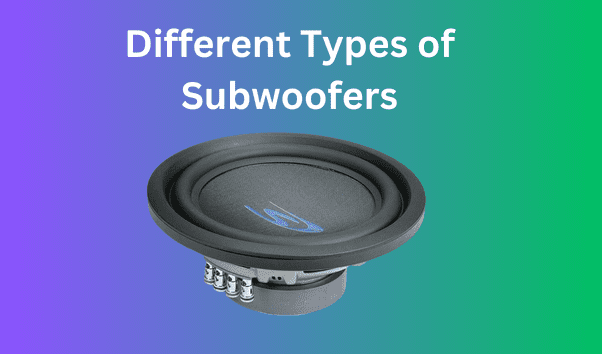
While purchasing speakers for your sound system. Your system would not be completed without a subwoofer. Your audio system is taken to another level when you add a subwoofer.
Subwoofers are a necessity if you are a passionate music listener and want high-quality sound, but you would have to choose between the best type of subwoofers according to your needs.
In live performances and movies, they use multiple subwoofers. The subwoofer delivers high-quality sound to the audience, allowing the audience to enjoy the music more.
Today, choosing a subwoofer is very difficult. There are many types of subwoofers on the market. Each of these subwoofers has a different purpose and produces a different sound.
When people try to buy subwoofers, they are often confused. Have you also been confused before purchasing subwoofers? you need not to worry anymore.
We will guide you on how to select the best subwoofers in this article. Come on, let us find out.
Subwoofer: What is it?
Subwoofers are specialized forms of woofers. In audio systems, subwoofers are used to produce low and narrow frequencies.
Typically, subwoofers operate between 20Hz to 200Hz in frequency. In terms of size, the subwoofer is bigger. Its size ranges from 8 to 21 inches. A Subwoofer delivers higher bass and high-quality sound.
There are several types of subwoofers, depending on their functionality and features. Below you will find a list of these subwoofers with their pros and cons.
- Active subwoofer
- Passive subwoofer
- Ported subwoofer
- Sealed Cabinet
- Passive Radiator
- Front and Down Firing Types of Subwoofers
- Bandpass Subwoofers
- Horn Loaded Subwoofers
Active subwoofers
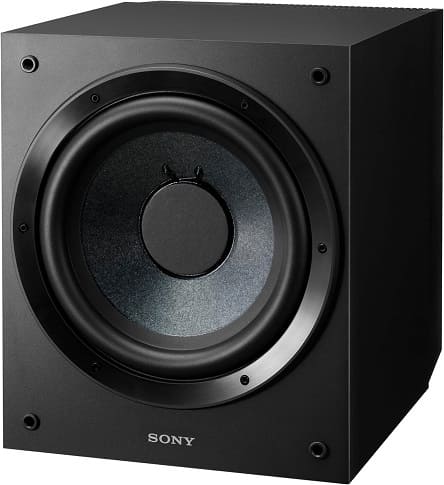
Active subwoofers are also known as powered subwoofers. Subwoofers of this type are self-contained, including speakers and amplifiers.
This means it has its own AC power source. A sound system for live performance and home setup the subwoofer will be active.
Pros and cons of Active subwoofers
| Pros | Cons |
| Amplifier: The amplifier comes with it. | Power: Power consumption by an active subwoofer affects utility bills. |
| Room Size: This model is best suited for use in small rooms. | Expense: An active subwoofer is costly than a single passive subwoofer. |
| Power match: The amplifier matches the speaker’s power requirements perfectly. | |
| Cable: Active sub doesn’t require as many cables as passive subwoofers. |
Passive Subwoofer
Passive subwoofers are called passive because they need to be powered by an external amplifier. The passive subwoofer needs more power to reproduce the lower frequencies. The passive subwoofer is ideal for large rooms.
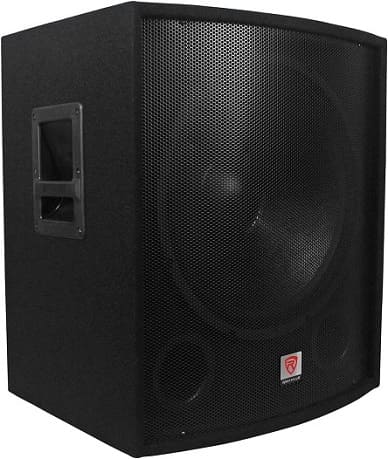
Pros and cons of Passive subwoofers
| Pros | Cons |
| Power: Passive subwoofers consume less power and will save you money on utility bills. | Amplifier: There is no amplifier with it. |
| Room Size: This unit comes in a larger size, so it is best used in space-consuming rooms. | Cable: A passive sub requires more cables than an active sub. |
| Expense: Passive subwoofers are less expensive than active ones. | |
| Connectivity: For setups with large subwoofers, passive subwoofers are the best choice. |
Sealed Cabinet type of subwoofers
Subwoofers with sealed surfaces consist of either their front or rear faces enclosed in a sealed box. A smaller box can generally accommodate this type of configuration, for those who enjoy “tight” bass, sealed subwoofers are recommended.
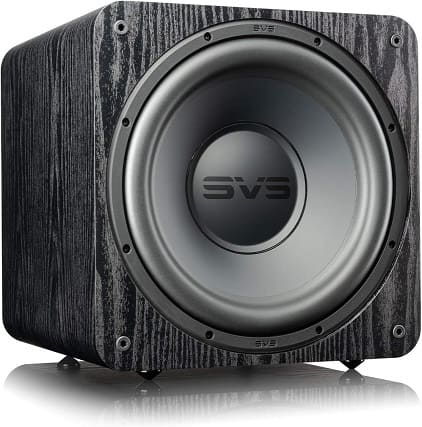
Pros and cons of Sealed cabinet subwoofers
| Pros | Cons |
| Bass: Good sound quality and more accurate bass. | Power: More power is needed for a louder bass. |
| Size: Smaller in size. | Expense: Power consumption by a sealed subwoofer affects utility bills. |
| Frequency: They are also better at reproducing low frequencies than ported speakers. |
Ported Subwoofer
The ports in ported subwoofers make them less simple than sealed subwoofers. Ported subwoofers contain a woofer and one or more ports that allow air to escape the enclosure. The woofer and the port are responsible for moving the air out of the box.
This is what allows you to get a bigger and louder sound from one box. For those who enjoy “boomy” bass, ported subwoofers are recommended.
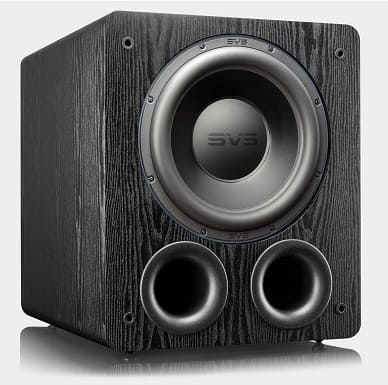
Pros and cons of Ported subwoofers
| Pros | Cons |
| Bass: Bass is louder and more boomy. | Size: Large because of the port. |
| Power: Low power consumption and more efficient. | Sound: Bass is louder and boomer, but less accurate. |
| Expense: Ported subwoofers cost less than sealed ones. | Climate Effect: Ported boxes are more sensitive to climate changes such as temperature. |
Passive Radiator type of subwoofers
Modern speakers are equipped with passive radiators because they are an excellent way to enhance the quality of the sound. This technique can be used to get additional power and resonance out of a smaller speaker system.
The passive speaker cones are so-called because they are not powered by electricity, instead, they’re powered by the air pressure created by the smaller speakers, which are powered by a battery or AC source.
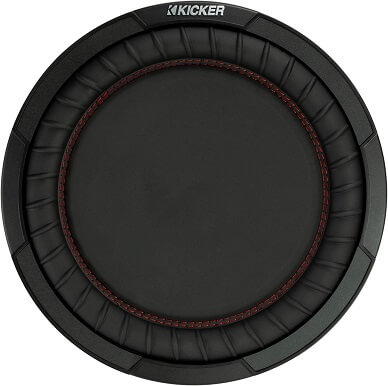
Pros and cons of Passive radiators
| Pros | Cons |
| Climate Effect: Passive radiators are not as affected by climate changes such as temperature. | Sound: They produce higher-quality audio but not louder as ported subwoofers. |
| Working: Passive radiators are perfect for portable systems. | |
| Power: It works at a lower energy level. | |
| Expense: The product is affordable and low in cost. |
Front and Down Firing Types of Subwoofers
Some subwoofers are down-firing, while others are front-firing. Down firing units emit the sound from the bottom, whereas front-firing units emit the sound from one side.
A subwoofer with a front-firing design creates vibrations that are felt in the air, but a subwoofer with a down-firing design creates vibrations that are felt on the ground. Subwoofers firing downward literally shake the floor.
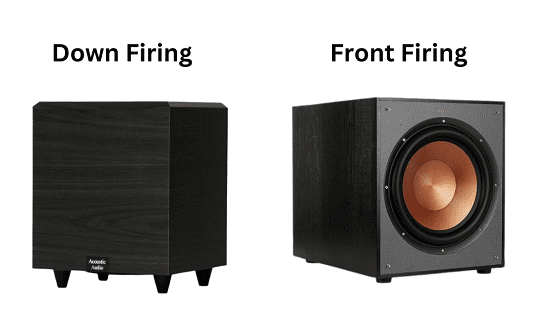
Today, choosing a sub is a challenge. It is important to keep the following factors in mind before deciding. For those who live in apartments, front-firing subs are essential since down-firing subs can disturb neighbors.
Sincerely, there is no difference between front-firing and down-firing subs. Their only difference is where they are placed.
You should place it at a height if it is going to be a down-firing sub. If you are planning on placing the sub with your other speakers, you should choose front-firing subs.
Pros and cons of Front Firing Subwoofers
| Pros of front-firing subwoofer | Cons of front-firing subwoofers |
| Placement: Good for apartments because it will not disturb your neighbors. | Placement: Bad for apartments because it will disturb your neighbors. |
Pros and cons of Downward Firing Subwoofers
| Pros of downward-firing subwoofer | Cons of downward-firing subwoofers |
| Fix in floor: The driver’s distance from the floor is fixed. As a result, the speaker can control what the sound sounds like. | Placement: Bad for apartments because it will disturb your neighbors. |
| Environmental factors: When you prefer the downward-firing sub, your woofer will be protected. Indirectly, you will protect your woofer by placing them downward. |
Bandpass types of Subwoofers
Compared to conventional subwoofers, bandpass subwoofers offer clear, natural bass output.
You can set the number of basses you want to be played through the speakers with great precision. Four, six, and eight bandpasses are included in the bandpass.
A bandpass subwoofer is designed to produce high-quality sound. The disadvantages of bandpass subwoofers are like those of other subwoofer enclosures, which you should be aware of before purchasing. Learn about the pros and cons of using a bandpass subwoofer in this article.
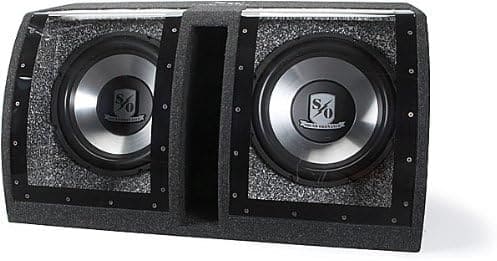
Pros and cons of Bandpass subwoofers
| Pros | Cons |
| Sound: Bass is natural and clear. | Space: If you are using a Bandpass subwoofer, you will have to sacrifice a lot of trunk space. |
| Size: Larger speakers produce a deeper and smoother frequency response. | Failure: Some subwoofers will not work well in bandpass enclosures, so check the manual at first |
| Offer: Provide sealed enclosures as well as ported enclosures. |
Horn loaded types of subwoofers
Subwoofers with horn-loaded are extremely efficient. By carefully designing the horn, you will be able to transfer more electric energy into the air, and you will also use less power.
Although these subs are efficient, their frequency must be lowered. Most subs with horn-loading use a folded design to make them more space-efficient.
An enclosure designed in such a way will eliminate resonance and reduce nonlinear distortion. Large rooms are usually equipped with subwoofers with horns.
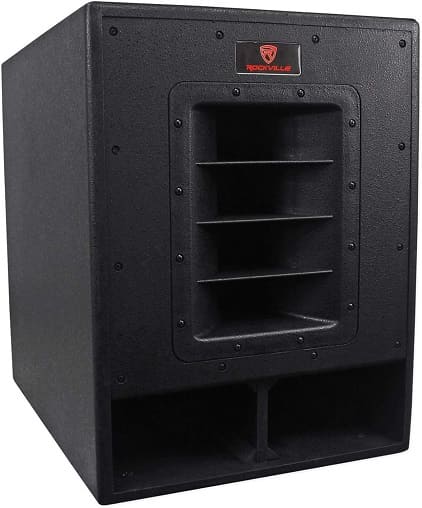
Pros and cons of Horn loaded subwoofers
| Pros | Cons |
| Sound: Very high efficiency. | Size: Large rooms are usually equipped with subwoofers with horns. |
| Power: It takes less power for more output. | In Small Rooms: Horns are typically very prominent midranges and cause problems in small spaces. |
| Offer: Provide sealed enclosures as well as ported enclosures. | Rooms with Hard Walls: Can cause problems in rooms with hard walls. |
| Expense: Horn loaded subwoofers are very expensive. |